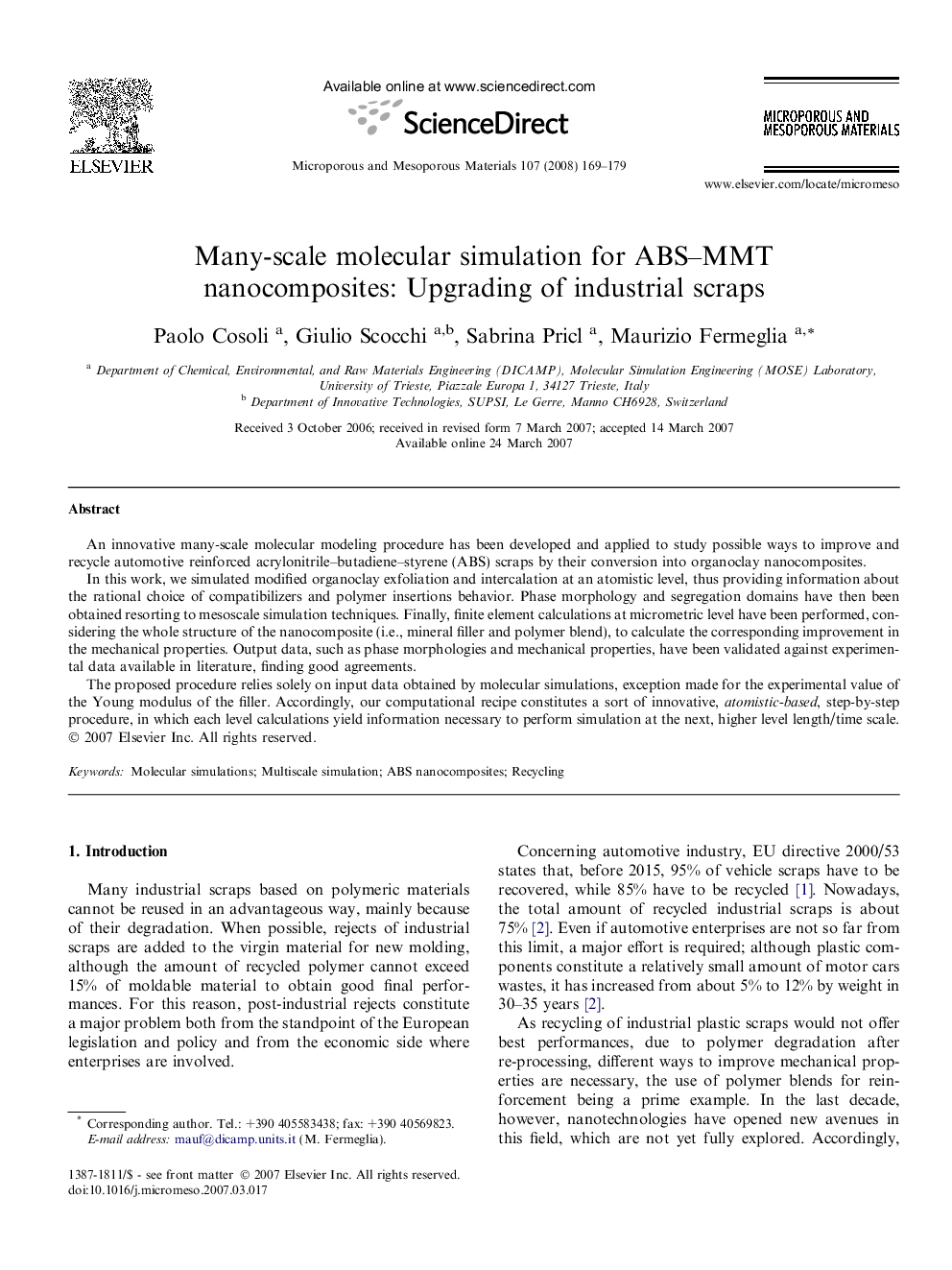| Article ID | Journal | Published Year | Pages | File Type |
|---|---|---|---|---|
| 76637 | Microporous and Mesoporous Materials | 2008 | 11 Pages |
An innovative many-scale molecular modeling procedure has been developed and applied to study possible ways to improve and recycle automotive reinforced acrylonitrile–butadiene–styrene (ABS) scraps by their conversion into organoclay nanocomposites.In this work, we simulated modified organoclay exfoliation and intercalation at an atomistic level, thus providing information about the rational choice of compatibilizers and polymer insertions behavior. Phase morphology and segregation domains have then been obtained resorting to mesoscale simulation techniques. Finally, finite element calculations at micrometric level have been performed, considering the whole structure of the nanocomposite (i.e., mineral filler and polymer blend), to calculate the corresponding improvement in the mechanical properties. Output data, such as phase morphologies and mechanical properties, have been validated against experimental data available in literature, finding good agreements.The proposed procedure relies solely on input data obtained by molecular simulations, exception made for the experimental value of the Young modulus of the filler. Accordingly, our computational recipe constitutes a sort of innovative, atomistic-based, step-by-step procedure, in which each level calculations yield information necessary to perform simulation at the next, higher level length/time scale.
